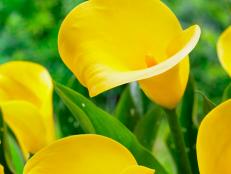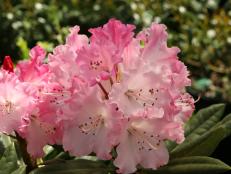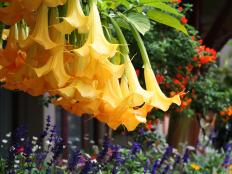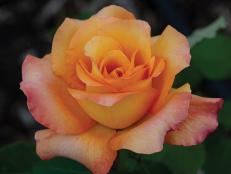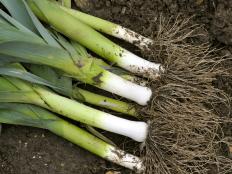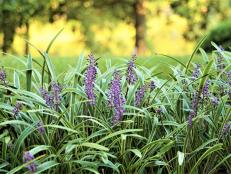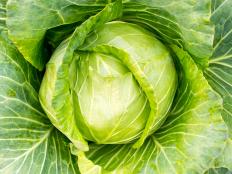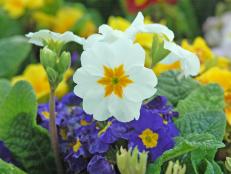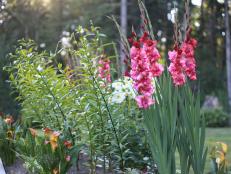How to Deadhead Flowers: Tips and Tricks
Want more flowers? Deadheading is an easy way to encourage more blooms and keep your plants looking their best.

Julie Martens Forney
Deadheading helps prevent disease and encourages more flowers. See our list of plants that can benefit from deadheading.

You've given your flowering plants good soil and the right amounts of water and fertilizer. When your beautiful blooms open, do one more thing to keep them coming: deadhead them.
Not all plants need deadheading, but this simple step makes them look better, helps prevent disease and encourages more flowers.
What is Deadheading?
Nature programs plants to form seeds so they can reproduce. After the seeds set, flowering stops. Deadheading means removing dead or dying flowers, so your plants are "tricked" into flowering again and forming more seeds. You can deadhead as often as needed during the growing season. Most gardeners stop when the temperatures drop or a few weeks before the first frost, so new growth won't be damaged by the cold.
Why Should I Deadhead My Flowers?
When you know how to deadhead flowers, your garden looks better and your plants make more flowers. Old blooms can also harbor diseases, so removing them helps keep your plants healthy. What happens if you don't deadhead? Most plants will stop blooming or produce fewer blooms. Unless it's sterile, it will set seeds.
How to Deadhead a Plant
Step-By-Step Deadheading
Learning how to deadhead flowers is easy.
- Pinch or cut just below the faded or finished flower.
- In general, cut stems to 1/4 inch above a new bud, leaf or bloom so you're not left with unsightly stems sticking out.
- Don't leave cut blooms on the ground after you deadhead your plants. Add them to your compost pile to keep your garden neat and discourage pests or diseases.
How to Deadhead Flowers by Pinching
Some old blooms are easy to remove with your fingers, especially if they have thin stems.
Pinch the faded flowers between your thumb and forefinger, using your fingernails if needed. (You might wind up with a little green under your nails.)
FYI: Pinching plants like herbs to encourage bushier growth, or for more flower stems like mums, isn't true deadheading. They're finger-pinched just above a node (the spot where the leaves attach to the stem). This causes the plant to form new side stems or branches, which then produce more leaves or flowers.
Tools for Deadheading
Use cutting tools like clean scissors, garden snips or pruners, which are better for roses and flowering plants with big, woody stems, to deadhead your plants.
Clean your tools between uses to avoid spreading any diseases that might be present. Plain water won't kill plant pathogens, so use a commercial product made for sterilizing garden tools or wipe, spray or dip your tools in 70% to 100% isopropyl alcohol or a solution of one part bleach to nine parts water.
Be careful; bleach and isopropyl alcohol give off harmful fumes, and bleach can damage your tools.
Put a little disinfectant in a bucket or spray bottle to carry around so it's easy to reclean your tools between plants. You can also deadhead with your fingers.
When and Which Flowers to Deadhead
When is the Best Time to Deadhead?
Deadhead single flowers anytime they start to wilt or die. Remove stems and spikes with multiple flowers after about three-quarters of the blooms are finished.
Stop deadheading in late summer or early fall if you want to leave seeds for hungry birds and other wildlife, or if you want to collect the ripened seeds to replant later.

Black-eyed Susans need little care, other than deadheading to encourage more blooms.
Don't deadhead flowers like hollyhocks, lobelia and foxgloves if you want them to form seeds and self-sow for the next growing season.
Flowers That Should Be Deadheaded
Not all flowering plants need deadheading. Some are self-cleaning and drop their faded flowers naturally. Others are sterile and don't set seeds, so they'll rebloom anyway. If you're not sure what to deadhead, do some research.
Flowers that need deadheading include:
If you want plants like hollyhocks and foxgloves to self-sow, let their flowers remain on the plants to form and drop seeds.
Flowers That Don't Need Deadheading
You don't need to deadhead flowers like:
- annual phlox
- modern ageratums
- Angelonias
- bacopas
- begonias
- bidens
- Browallia
- calibrachoas
- Celosias
- cleomes
- coleus
- cuphea
- daylilies
- most flowering vines
- most groundcovers
- impatiens
- nasturtiums
- Nemesias
- Wave and other modern petunias
- periwinkles
- scaevolas
- Torenias
- hybrid verbenas
- some zinnias
How to Deadhead Roses
Different types of roses need different kinds of deadheading. Deadhead individual roses by cutting the stems at a 45-degree angle. Angle the cut toward the center of the bush and just above the first set of leaves with five leaflets. Deadhead clusters of flowering roses the same way after all or most of the flowers in the cluster are finished. Shrub and Knock Out roses don't need deadheading.
Deadhead plants with small blooms, like old-fashioned sweet alyssum, some ageratums, coreopsis and lobelias by shearing them. Many modern hybrids will rebloom without shearing but look better.
How to Deadhead Petunias
Some modern petunias, such as Wave petunias and Supertunias, don't need deadheading. Other petunias can be deadheaded by pinching off or cutting the dead flowers at the base. You can also cut back overly-long stems to make the petunias bushier.
Tips for Extending Bloom Times
- Research your plants or read their tags to know how much fertilizer, light and water they need.
- Amend your soil, if needed. Harvest Gold Organics Premium Soil Conditioner provides micronutrients said to help produce more flowers and foliage.
- Check your plants often and address pest and disease problems as soon as you spot them.
- As a rule of thumb, mix granular, time-released fertilizer into the soil when you plant and supplement during the growing season with a liquid bloom food.
- Mulch to keep the roots moist and cool, unless you want your plants to drop seeds and self-sow.
- Weed often so plants don't have to compete for water and nutrients.
- Grow plants with staggered bloom times to keep the flower show going or choose reblooming azaleas, hydrangeas and other plants.








